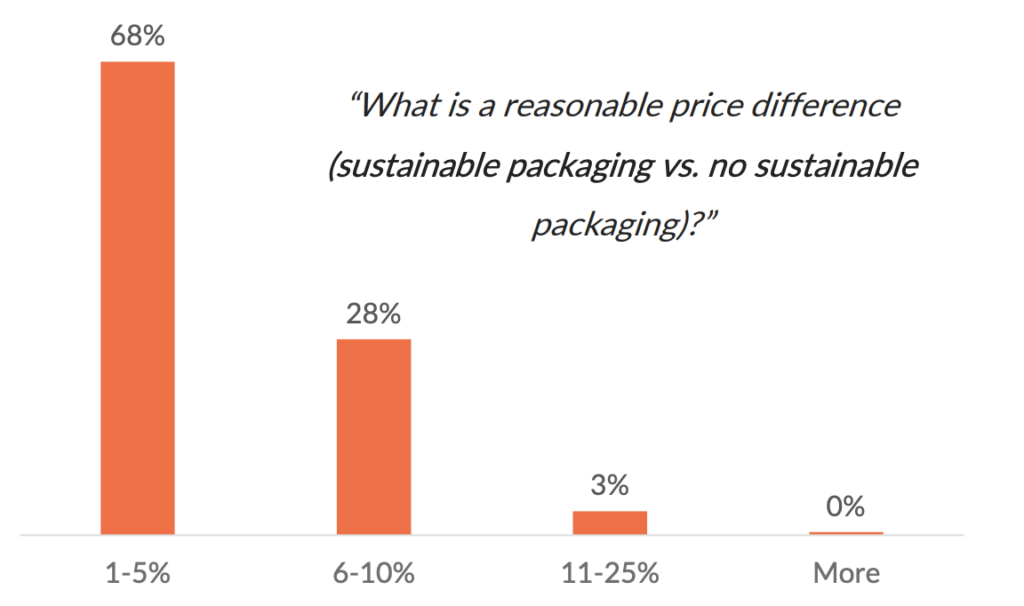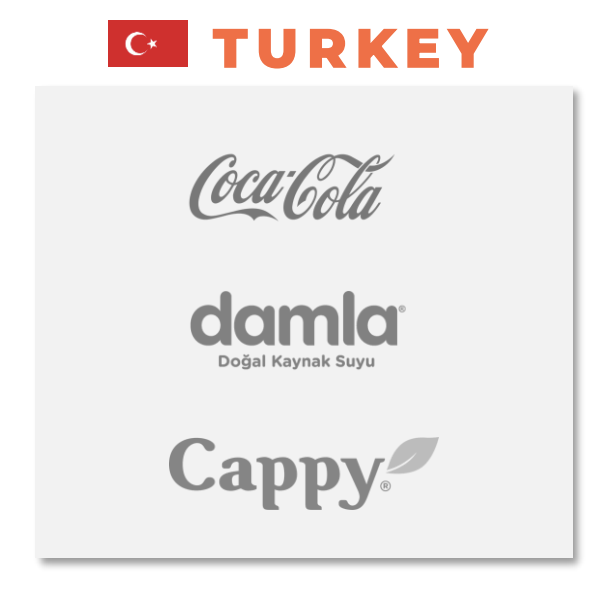Aiming to deal with the increasing quantities of packaging waste, the European Union already amended its laws on packaging several times and will introduce extended laws in the coming years. Experts state that consumer attitudes about sustainable packaging have also changed significantly, and the question that arises is:
“What are consumer preferences when it comes to sustainable packaging in the retail and Out Of Home channels?”
We asked our large community of European mobile users to tell us about their consuming behaviour and preferences when it comes to sustainable packaging. Read all our interesting findings in this month’s Consumer Report.
RECAP
▪ 80% of European consumers pay attention to packaging sustainability at least ‘sometimes’.
▪ 1-5% is the most accepted price difference between products with vs. products without sustainable packaging.
▪ Consumers think there is still room for improvement, especially in the vegetable category.
▪ The brand Coca-Cola is perceived as being progressive in 5 out of 7 countries.
▪ 44% of European consumers is willing to pay more for sustainable napkins and cutlery.
▪ Despite the preference for reusable packaging, only 50% of European consumers state to always keep and reuse it.
▪ When ordering take-away food, 89% of European consumers think receiving a discount would stimulate them to bring their own packaging.
▪ 74% of European consumers state to recommend a delivery or take-away place to a friend, knowing they serve food in sustainable packaging.
RETAIL
PAYING ATTENTION IN THE SUPERMARKET
A 2020 study by McKinsey showed that consumers gave a relatively low rank to the environmental aspects of products and their packaging when making a purchasing decision. However, our findings show that 80% of European consumers pay attention to packaging sustainability at least ‘sometimes’ when doing grocery shopping. They do this mostly to make it easier to dispose (67%), and to reduce their carbon footprint (65%).

PRICE, ACCEPTED DIFFERENCE
While consumers do pay attention to the sustainability of packaging, 40% is not willing to pay more for products with a sustainable packaging. Of the consumers who are willing to pay more, 68% finds a 1-5% price difference acceptable. 28% is okay with paying 6-10% more, and 3% even has no problems with paying 11-25% more.

CATEGORIES THAT SHOULD DO BETTER
Various studies have shown that consumers consider the sustainability of packaging important in all product categories. Our results show that there is still room for improvement, especially in the vegetable category, as 58% of consumers believe that this category should do better.
“Which category/categories do you feel should do better when it comes to sustainable packaging?”
- Vegetables – 58%
- Fruits – 53%
- Water – 49%
- Home care & laundry – 48%
- Personal hygiene – 46%
BRANDS THAT ARE PERCEIVED TO BE PROGRESSIVE
The importance of having a sustainable packaging for premium brands becomes clear from our finding that 62% of consumers would buy a lessknown brand with sustainable packaging, rather than a premium brand without sustainable packaging. We asked our community which food/drink brands they think are progressive when it comes to sustainability, showing major differences per country. However, consumers from 5 out of 7 countries name Coca-Cola as being progressive.
“Which food/drink brand do you think is very progressive when it comes to sustainable packaging?”







COMMUNICATION PREFERENCES
To conquer a place in the aforementioned top 3’s, the right communication is a relevant aspect of sustainable packaging. We asked our community about their preferences when it comes to communicating about sustainable packaging. The results show that information on the packaging itself is most preferred (51%), followed by very clear sustainable material use (29%).

OUT OF HOME
ATTENTION AND PRICE – FOOD DELIVERY OR TAKE-AWAY
In the Out Of Home market, 57% of European consumers state to pay attention to sustainable packaging at least ‘sometimes’. In The Netherlands and Belgium, consumers pay least attention to this with 67% and 56% of consumers stating they never do. Consumers in these two countries are also least willing to pay more for sustainable packaging when ordering take-away or delivery food (52%; 57% stating they are not willing to). In general, if European consumers are willing to pay more (17% yes; 36% sometimes), most of them find a 1-5% difference acceptable (67%).

NAPKINS AND CULTERY OPT-IN
Many restaurants add napkins and cutlery to delivery and take-away orders by default, without even knowing if their customers will use them. Our findings show that 84% of consumers would like to have the option to opt-in for adding napkins and cutlery to their food delivery or take-away, instead of it being added by default. 44% of them is even willing to pay more for napkins and cutlery if they are sustainable.

RECYCLABLE AND REUSABLE – PREFERENCES AND BEHAVIOUR
Reusable packaging is proving to be a versatile and valuable solution for food and drink products. Previous research shows that most consumers are interested in reusable packaging, and our research confirms that reusable packaging is the preferable option compared to recyclable packaging (53%).
Do consumers really keep and reuse it? Despite the preference for reusable packaging, only 50% of European consumers state to always keep and reuse it. In The Netherlands, this number is even lower: 32% does not keep and use reusable packaging. Logically, this is the only country where consumers prefer recyclable packaging over reusable packaging for their take-away or delivery food.
BRING YOUR OWN PACKAGING – PREFERENCES AND INTENTIONS
The Bring Your Own Cup trend has learned Out Of Home locations that consumers are really willing to receive their drink in a brought cup. Our research shows that 50% of consumers would always like to have the option to bring their own packaging, e.g., a coffee mug or food box. 29% states to sometimes want to have this option.
In case you would like to stimulate your customers to bring their own packaging, offering a discount for bringing your own packaging seems to be an effective idea. 89% of European consumers thinks it would stimulate them to do so.

NPS BASED ON PACKAGING
Offering sustainable packaging in the Out Of Home channel can be a very valuable marketing tool. Not only is it in line with the European consumer preferences, but it also seems to have a positive influence on the Net Promotor Score. Our findings show that 74% of European consumers state to recommend a delivery or take-away place to a friend, knowing they serve food in sustainable packaging. In Turkey, this positive influence is highest, with 92% of consumers indicating they would recommend such a place to a friend.

The findings presented in this report are based on the results of an investigative task submitted to the Roamler Community for one month (August 2022). The purpose was to determine the communities’ preferences when it comes to sustainable packaging. The findings reflect data collected from 4.933 respondents, located in France, Spain, The United Kingdom, Belgium, Turkey, Italy, and The Netherlands.